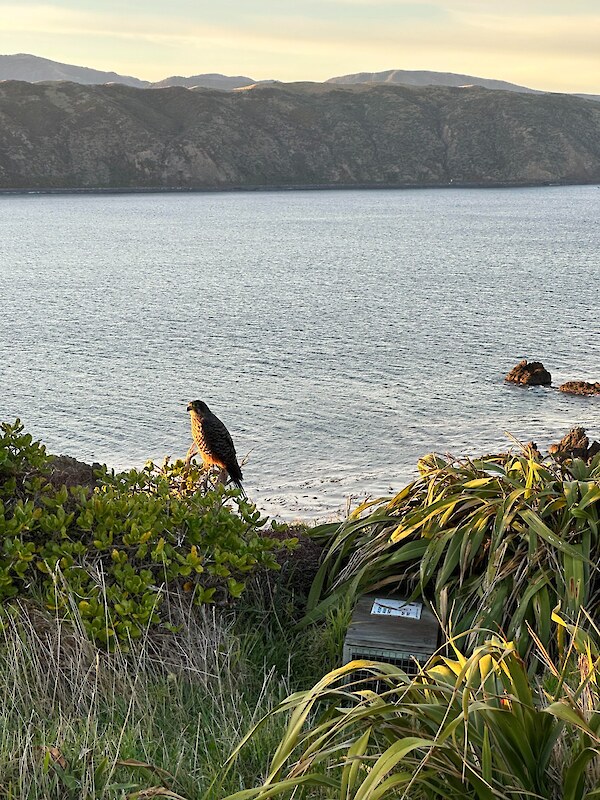Impact stories: Increase in native birdlife
Qualitative evaluation – Most Significant Change
To better understand the impact of the Te Motu Kairangi, Miramar Peninsula project at a deeper level, Predator Free Wellington is capturing stories from residents, volunteers, staff and key stakeholders about changes that may have resulted from involvement in our predator free project on the Miramar Peninsula. We are using a technique called Most Significant Change, which is a participatory form of monitoring and evaluation that measures intangible qualitative indicators.
This story was selected as most significant because it provides local insight into life on the Miramar Peninsula, especially as wildlife begins to thrive again. It was heartening to see that by getting involved in trapping, you are leaving this part of the world in a better place. Where backyards once hosted only blackbirds and sparrows, they now flourish with kārearea, tūi, and kererū—it’s a remarkable transformation!
Impact theme: Increase in native birdlife
First person story from a Predator Free Miramar Volunteer, November 2023. © Lance Lones
© Lance Lones
I started volunteering with Predator Free Miramar in 2017, managing a trap line of eight traps in Worser Bay. Before then I had a trap in my backyard from Predator Free Seatoun, this was in 2016, I also regularly volunteered with Te Motu Kairangi Restoration, helping with weeding and planting. I still volunteer regularly meeting the Predator Free Miramar volunteer crew every Sunday.
The most significant change for me is seeing the increase in native birdlife. Before the Predator Free Wellington project began, there were mostly just blackbirds and sparrows in my garden – they were always around. Tūī were few and far between and generally only spotted in remote places on the peninsula, such as Massey Memorial. I never saw any falcons (kārearea) and I only had brief visits from kererū when there was an abundant food source available.
Back then, there were a LOT of rats! In the early days of managing my Worser Bay trap line, I would be catching five to seven rats in the eight traps every single day. If I left a trap check for more than 12 hours I would run the risk of finding just the rat head left, as the rats were eating the rats that were caught in the trap! This intensity happened for about three months. Once the poison started, the rats just stopped.
Without rats on the peninsula the native bush is healthier. Rats aren’t eating the seeds, which means the trees and plants are growing better and that provides food for the birds.
There’s been a massive explosion in birdlife, Sometimes I will see up to 30 tūi at a time, and I often have half a dozen in my pohutukawa tree. There’s a nesting pair of falcons only a few hundred metres from my house and I hear them every day, swooping. I also hear ruru (native owls) in summer when the door is open at night.
When I’m checking the trapline dozens of fantail (pīwakawaka) follow me around. Once I even spotted a kākā near Pass of Branda. No one believed me at the time, but I saw the orange under the wings, it was definitely kākā, and historically they were there.
This change is significant for me, because I know we are leaving this part of the world in a better place. Without rats on the peninsula, every year gets better, the trees can grow and we get this explosion of birds.
When I heard they wanted to eradicate the whole peninsula I was happy to give it a go, but never imagined we would see this amount of change, I never imagined I would have a pair of native falcons 500 metres from my house.
I’m glad that I had input in some way – helped in some way. I definitely caught a few rats!
Posted: 15 November 2024
